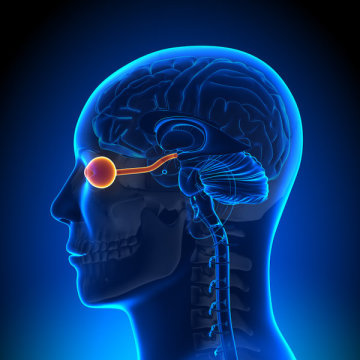A new diagnosis route based on blood test in the treatment of Alzheimer’s disease
One of the major global medical challenges today is the increasing cases of dementia caused by Alzheimer disease (AD). AD is considered a debilitating and incurable disease. It is believed that without the discovery of successful prevention therapies, an estimated 100 million people worldwide will have AD dementia in 2050. In view of this very complex medical challenge, the World Health Organization has initiated a global action plan against dementia that focusses on specifying improved diagnostics as a key area for an optimal disease management and treatment. In this regard, it is believed that an early, accurate, and biomarker-based diagnosis of AD can potentially be very effective along with disease-modifying treatments to prevent and eventually cure AD.
One viable approach for many years has been based on the characterization of amyloid plaques and tau tangles in the brain after a person dies for the effective development of diagnostics to prevent Alzheimer's. Lately, an important aspect that researchers have paid attention to is addressing the discriminative accuracy of plasma phospho-tau217 (P-tau217) for differentiating Alzheimer disease from other neurodegenerative disorders. To this end, development of an inexpensive and widely available blood test for the presence of plaques and tangles is considered a potential breakthrough that would have a profound impact on Alzheimer's research and care. Recently, a large international team of researchers from the United States, Sweden and Columbia demonstrated a breakthrough approach based on a new blood test that showed remarkable promise in discriminating between persons with and without Alzheimer's disease. This study could pave the way for the diagnosis in persons at known genetic risk and detect the disease as early as 20 years before the onset of cognitive impairment. This research was published in the Journal of the American Medical Association (JAMA) (Discriminative Accuracy of Plasma Phospho-tau217 for Alzheimer Disease vs Other Neurodegenerative Disorders, JAMA, 2020; DOI: 10.1001/jama.2020.12134). In this new study, researchers measured phospho-tau217 (p-tau217), one of the tau proteins found in tangles, and showed the viable approach of a relatively sensitive and accurate indicator of both plaques and tangles corresponding to the diagnosis of Alzheimer's in living people. Researchers then evaluated a new p-tau217 blood test in 1,402 cognitively impaired and unimpaired research participants that comprised from well-known studies in Arizona, Sweden, and Colombia. This study included 81 Arizona participants in Banner Sun Health Research Institute's Brain Donation program who had clinical assessments that provided blood samples in their last years of life and then had neuropathological assessments after they died. This also included 699 participants in the Swedish BioFINDER Study who had clinical, brain imaging, cerebrospinal fluid (CSF), and blood-based biomarker assessments. In addition, 522 Colombian autosomal dominant Alzheimer's disease (ADAD)-causing mutation carriers and non-carriers from the world's largest ADAD cohort were also included in the study. The novel approach of diagnosis based on the p-tau217 blood test has great potential in the diagnosis, early detection of Alzheimer's. Researchers envision that the blood test might become especially useful to improve the recognition, diagnosis, and care of people in the primary care setting that could pave the way to revolutionize Alzheimer's research, treatment and prevention trials, and clinical care.
One viable approach for many years has been based on the characterization of amyloid plaques and tau tangles in the brain after a person dies for the effective development of diagnostics to prevent Alzheimer's. Lately, an important aspect that researchers have paid attention to is addressing the discriminative accuracy of plasma phospho-tau217 (P-tau217) for differentiating Alzheimer disease from other neurodegenerative disorders. To this end, development of an inexpensive and widely available blood test for the presence of plaques and tangles is considered a potential breakthrough that would have a profound impact on Alzheimer's research and care. Recently, a large international team of researchers from the United States, Sweden and Columbia demonstrated a breakthrough approach based on a new blood test that showed remarkable promise in discriminating between persons with and without Alzheimer's disease. This study could pave the way for the diagnosis in persons at known genetic risk and detect the disease as early as 20 years before the onset of cognitive impairment. This research was published in the Journal of the American Medical Association (JAMA) (Discriminative Accuracy of Plasma Phospho-tau217 for Alzheimer Disease vs Other Neurodegenerative Disorders, JAMA, 2020; DOI: 10.1001/jama.2020.12134). In this new study, researchers measured phospho-tau217 (p-tau217), one of the tau proteins found in tangles, and showed the viable approach of a relatively sensitive and accurate indicator of both plaques and tangles corresponding to the diagnosis of Alzheimer's in living people. Researchers then evaluated a new p-tau217 blood test in 1,402 cognitively impaired and unimpaired research participants that comprised from well-known studies in Arizona, Sweden, and Colombia. This study included 81 Arizona participants in Banner Sun Health Research Institute's Brain Donation program who had clinical assessments that provided blood samples in their last years of life and then had neuropathological assessments after they died. This also included 699 participants in the Swedish BioFINDER Study who had clinical, brain imaging, cerebrospinal fluid (CSF), and blood-based biomarker assessments. In addition, 522 Colombian autosomal dominant Alzheimer's disease (ADAD)-causing mutation carriers and non-carriers from the world's largest ADAD cohort were also included in the study. The novel approach of diagnosis based on the p-tau217 blood test has great potential in the diagnosis, early detection of Alzheimer's. Researchers envision that the blood test might become especially useful to improve the recognition, diagnosis, and care of people in the primary care setting that could pave the way to revolutionize Alzheimer's research, treatment and prevention trials, and clinical care.


